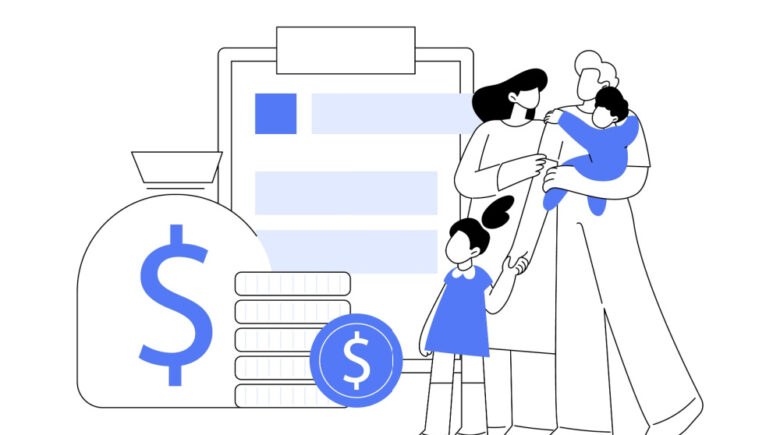Table of Contents
Every year, millions of American households secure essential financial relief through federal tax credits designed to bolster the incomes of working families. For low-income households, these credits can transform a modest refund into a meaningful supplement—helping to cover necessities such as food, housing, child care and education. This guide outlines the most important tax credits available to low-income families, explains eligibility requirements, and offers practical steps for claiming these benefits on your return.
Understanding the Earned Income Tax Credit (EITC)
The Earned Income Tax Credit is a refundable benefit aimed at low- and moderate-income workers. It reduces your tax liability dollar for dollar and may result in a refund even if you owe no tax. First enacted in 1975, the EITC remains one of the most powerful anti-poverty tools in the federal tax code nerdwallet.com.
Key eligibility requirements include:
- Earned income threshold: Your wages or self-employment income must fall within specified limits. For the 2025 tax year, the maximum adjusted gross income ranges from approximately $17,000 (no qualifying children) to about $61,000 (three or more qualifying children) nerdwallet.com.
- Social Security number: You (and any qualifying children) must possess a valid Social Security number by the due date of your return.
- Filing status: You cannot claim the EITC if you file as “Married Filing Separately.”
- Investment income cap: Your investment income cannot exceed $11,950 in 2025.
- Qualifying children: Rules define age, relationship and residency requirements for children who can be claimed.
Annual tables published by the IRS identify exact phase-in and phase-out ranges as well as maximum credit amounts. For example, in 2025 the maximum credit is $8,046 for taxpayers with three or more qualifying children nerdwallet.com.
Determining Your EITC Amount
The EITC calculation depends on three factors:
- Your earned income: The more you earn (up to a point), the larger the credit.
- Filing status: Single, head of household, or married filing jointly can affect thresholds.
- Number of qualifying children: More children mean a higher credit, capped at three.
Because the credit is refundable, you may receive the full amount even if your tax liability is zero. Consult the IRS’s earned income and EITC tables to pinpoint your exact credit irs.gov.
The Child Tax Credit (CTC) Explained
Another cornerstone benefit is the Child Tax Credit, which provides up to $2,000 per qualifying child under age 17 on your tax return. Families with incomes below phase-out thresholds ($200,000 for single filers and $400,000 for joint filers in 2025) can claim the full credit. Up to $1,700 of this credit is refundable as the Additional Child Tax Credit if the nonrefundable portion exceeds your tax liability irs.gov.
Eligibility highlights:
- Qualifying child: Must be under age 17 at the end of the tax year, claimed as a dependent, and have a valid Social Security number.
- Income limits: Phase-outs begin at $200,000 for single filers and $400,000 for married couples filing jointly.
The CTC remains a critical source of support for families, offsetting child-related expenses such as school supplies, extracurricular activities and pediatric health care.
Other Federal Credits for Low-Income Families
In addition to the EITC and CTC, low-income households may benefit from:
- Child and Dependent Care Credit: A nonrefundable credit covering up to 35% of qualifying care expenses for children under age 13 or disabled dependents, subject to annual expense limits.
- American Opportunity Tax Credit: Offers up to $2,500 per student for qualified higher-education expenses during the first four years of postsecondary education.
- Saver’s Credit: A retirement savings incentive allowing households earning below specified thresholds to claim a credit for contributions to IRAs or employer-sponsored plans.
Each credit carries its own eligibility rules and income caps. Families should review IRS Publication 907 and Publication 503 for full details.
Steps to Claim Your Credits
- Gather documentation: W-2s, 1099 forms, Social Security numbers for all dependents and receipts for childcare or education expenses.
- Complete the correct forms:
- Form 1040 and Schedule EIC for the EITC.
- Schedule 8812 for the refundable portion of the Child Tax Credit.
- Form 2441 for the Child and Dependent Care Credit.
- Use IRS tools: The IRS’s EITC Assistant and interactive CTC calculator can help verify eligibility and estimate credit amounts.
- File electronically: E-filing software often includes error checks for credit claims and can speed up refunds.
- Seek free assistance: IRS Volunteer Income Tax Assistance (VITA) sites and Tax Counseling for the Elderly (TCE) offer free tax-prep services to qualifying taxpayers.
Maximizing Your Benefit
- Adjust withholdings: Lowering your payroll tax withholding may increase your take-home pay while still preserving your eligibility for refundable credits.
- Stay informed on legislative changes: Credit amounts and eligibility rules can change annually. Consult IRS.gov or reputable financial publications for updates kiplinger.com.
- Claim state credits: Many states supplement federal benefits with their own EITC or child credits. Check your state revenue department’s website for details.
Final Thoughts
Tax credits represent a vital resource for low-income families striving to meet everyday expenses and build financial stability. By understanding the qualifications and proper filing procedures, eligible households can secure substantial refunds or reduce tax liabilities—putting valuable dollars back into their budgets. Review this guide annually, consult official IRS resources, and consider professional assistance to ensure you claim every credit you deserve.
References
- Internal Revenue Service. “Earned Income Tax Credit (EITC).” IRS.gov. https://www.irs.gov/credits-deductions/individuals/earned-income-tax-credit-eitc
- Internal Revenue Service. “Child Tax Credit (CTC).” IRS.gov. https://www.irs.gov/credits-deductions/individuals/child-tax-credit
- Internal Revenue Service. Publication 503: Child and Dependent Care Expenses. IRS.gov. https://www.irs.gov/publications/p503
Table of Contents
Every year, millions of American households secure essential financial relief through federal tax credits designed to bolster the incomes of working families. For low-income households, these credits can transform a modest refund into a meaningful supplement—helping to cover necessities such as food, housing, child care and education. This guide outlines the most important tax credits available to low-income families, explains eligibility requirements, and offers practical steps for claiming these benefits on your return.
Understanding the Earned Income Tax Credit (EITC)
The Earned Income Tax Credit is a refundable benefit aimed at low- and moderate-income workers. It reduces your tax liability dollar for dollar and may result in a refund even if you owe no tax. First enacted in 1975, the EITC remains one of the most powerful anti-poverty tools in the federal tax code nerdwallet.com.
Key eligibility requirements include:
- Earned income threshold: Your wages or self-employment income must fall within specified limits. For the 2025 tax year, the maximum adjusted gross income ranges from approximately $17,000 (no qualifying children) to about $61,000 (three or more qualifying children) nerdwallet.com.
- Social Security number: You (and any qualifying children) must possess a valid Social Security number by the due date of your return.
- Filing status: You cannot claim the EITC if you file as “Married Filing Separately.”
- Investment income cap: Your investment income cannot exceed $11,950 in 2025.
- Qualifying children: Rules define age, relationship and residency requirements for children who can be claimed.
Annual tables published by the IRS identify exact phase-in and phase-out ranges as well as maximum credit amounts. For example, in 2025 the maximum credit is $8,046 for taxpayers with three or more qualifying children nerdwallet.com.
Determining Your EITC Amount
The EITC calculation depends on three factors:
- Your earned income: The more you earn (up to a point), the larger the credit.
- Filing status: Single, head of household, or married filing jointly can affect thresholds.
- Number of qualifying children: More children mean a higher credit, capped at three.
Because the credit is refundable, you may receive the full amount even if your tax liability is zero. Consult the IRS’s earned income and EITC tables to pinpoint your exact credit irs.gov.
The Child Tax Credit (CTC) Explained
Another cornerstone benefit is the Child Tax Credit, which provides up to $2,000 per qualifying child under age 17 on your tax return. Families with incomes below phase-out thresholds ($200,000 for single filers and $400,000 for joint filers in 2025) can claim the full credit. Up to $1,700 of this credit is refundable as the Additional Child Tax Credit if the nonrefundable portion exceeds your tax liability irs.gov.
Eligibility highlights:
- Qualifying child: Must be under age 17 at the end of the tax year, claimed as a dependent, and have a valid Social Security number.
- Income limits: Phase-outs begin at $200,000 for single filers and $400,000 for married couples filing jointly.
The CTC remains a critical source of support for families, offsetting child-related expenses such as school supplies, extracurricular activities and pediatric health care.
Other Federal Credits for Low-Income Families
In addition to the EITC and CTC, low-income households may benefit from:
- Child and Dependent Care Credit: A nonrefundable credit covering up to 35% of qualifying care expenses for children under age 13 or disabled dependents, subject to annual expense limits.
- American Opportunity Tax Credit: Offers up to $2,500 per student for qualified higher-education expenses during the first four years of postsecondary education.
- Saver’s Credit: A retirement savings incentive allowing households earning below specified thresholds to claim a credit for contributions to IRAs or employer-sponsored plans.
Each credit carries its own eligibility rules and income caps. Families should review IRS Publication 907 and Publication 503 for full details.
Steps to Claim Your Credits
- Gather documentation: W-2s, 1099 forms, Social Security numbers for all dependents and receipts for childcare or education expenses.
- Complete the correct forms:
- Form 1040 and Schedule EIC for the EITC.
- Schedule 8812 for the refundable portion of the Child Tax Credit.
- Form 2441 for the Child and Dependent Care Credit.
- Use IRS tools: The IRS’s EITC Assistant and interactive CTC calculator can help verify eligibility and estimate credit amounts.
- File electronically: E-filing software often includes error checks for credit claims and can speed up refunds.
- Seek free assistance: IRS Volunteer Income Tax Assistance (VITA) sites and Tax Counseling for the Elderly (TCE) offer free tax-prep services to qualifying taxpayers.
Maximizing Your Benefit
- Adjust withholdings: Lowering your payroll tax withholding may increase your take-home pay while still preserving your eligibility for refundable credits.
- Stay informed on legislative changes: Credit amounts and eligibility rules can change annually. Consult IRS.gov or reputable financial publications for updates kiplinger.com.
- Claim state credits: Many states supplement federal benefits with their own EITC or child credits. Check your state revenue department’s website for details.
Final Thoughts
Tax credits represent a vital resource for low-income families striving to meet everyday expenses and build financial stability. By understanding the qualifications and proper filing procedures, eligible households can secure substantial refunds or reduce tax liabilities—putting valuable dollars back into their budgets. Review this guide annually, consult official IRS resources, and consider professional assistance to ensure you claim every credit you deserve.
References
- Internal Revenue Service. “Earned Income Tax Credit (EITC).” IRS.gov. https://www.irs.gov/credits-deductions/individuals/earned-income-tax-credit-eitc
- Internal Revenue Service. “Child Tax Credit (CTC).” IRS.gov. https://www.irs.gov/credits-deductions/individuals/child-tax-credit
- Internal Revenue Service. Publication 503: Child and Dependent Care Expenses. IRS.gov. https://www.irs.gov/publications/p503







